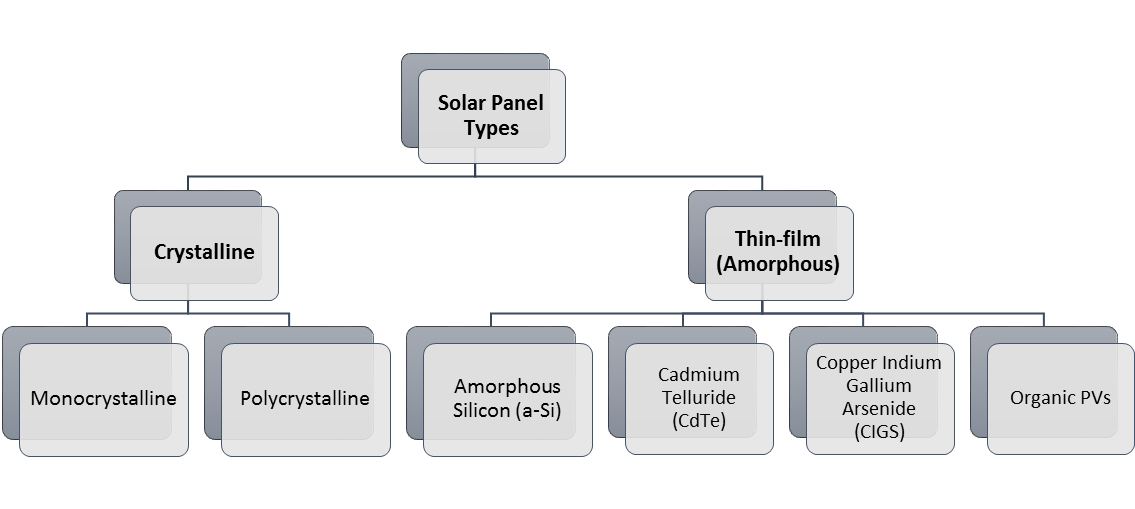When you want to purchase a solar panel, very often you are stuck with the question of which type of panels to choose from. The various factors in making this decision ranges from the efficiency, cost, reliability and longevity of the solar panel type.
Let us start this discussion by categorising the types of solar cells.
 Now, let us compare crystalline and thin-film technologies by tabulating their pros and cons:
Now, let us compare crystalline and thin-film technologies by tabulating their pros and cons:
| Crystalline | Thin-film |
Pros
|
Pros
|
Cons
|
Cons
|
Conclusion
The question of which panel is better is a bit difficult to summarise as the efficiency and cost of panels varies with respect to the manufacturer, location and other factors. But as a general consensus the following can be summarised while deciding on the best solar panel:
- Monocrystalline panels are currently the most efficient types of solar panels but polysilicon panels dominate the market with around 70% of crystalline panel market share.
- Monocrystalline and polycrystalline panels have similar advantages but monocrystalline panel are slightly more space-efficient. So, if you decide to choose a solar panel with a rated capacity of 200 watts, monocrystalline panels save space. Thus, thin film panels are unsuitable for residential installations due to their space inefficiency and can only be profitably installed on a commercial scale. Hence, when space is a concern it is better to use crystalline panels.
- Although, traditionally crystalline silicon cells are considered to have better efficiencies, thin-film cells are catching up at a fast pace. First Solar, a US-based solar PV manufacturer, has been a pioneer in developing thin-film technology and has challenged polycrystalline cell efficiencies. In fact, through its thin-film revolution, it has become the largest and most profitable solar company.
So, in a changing market scenario, it is to be seen how the market for different solar technologies changes in the future. And hence the decision to choose the best panel type depends on the local market scenario and the availability of solar installers for a particular solar technology which differs from location-to-location.
Related Articles

 Skip to content
Skip to content